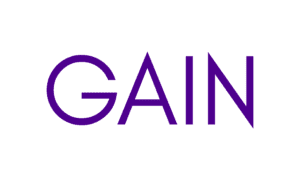In the world of finance, the term “target costing” often raises eyebrows and sparks curiosity. What exactly is it, and why is it a crucial concept in today’s fast-paced business landscape? Well, target costing is like a financial GPS that guides companies to create products that not only satisfy customer expectations but also keep profitability in check. Achieving this financial bliss requires the collaboration of cross-functional teams working together seamlessly.
Let’s delve into the world of target costing, decode its significance, and uncover the secrets to fostering trust and accountability within these teams to make it all work like a charm.
Defining clear roles and responsibilities
Picture this: you’re planning a group hike with friends, and everyone has a role. One’s in charge of navigation, another for supplies, and someone else for first aid. Clear roles and responsibilities make the hike smooth and enjoyable. In the world of target costing, it’s pretty much the same. Each team member needs to know their task, the project’s scope, objectives and deadlines. And just like our hiking example, setting decision-making authority, communication channels and conflict resolution mechanisms is like having a map to guide you. This clarity not only prevents chaos but also builds a sense of ownership and commitment.
Encouraging open and honest communication
Imagine your team as a table filled with people from diverse backgrounds. At this table, everyone should feel comfortable sharing their ideas and concerns. Open communication is the secret sauce that makes everything work. When team members can freely express their thoughts without fear of judgement, magic happens. It’s about being transparent, sharing information, and collaborating effectively. So, encourage your team to speak up, because it’s this transparency that helps solve issues and challenges as they pop up.
Recognizing and rewarding contributions and achievements
Think of your team as a sports squad. When a player scores a goal, everyone cheers. In your cross-functional team, celebrating contributions and achievements works in a similar way. Applaud the hard work, acknowledge the team’s milestones, and provide constructive feedback. Consider introducing a bonus system based on the team’s overall performance to boost motivation and make everyone feel valued.
Promoting learning and development opportunities
Imagine your team as a garden. To thrive, it needs nurturing. Similarly, your team members need opportunities for growth. Offer training, tools and resources related to target costing and cross-functional collaboration. Let them learn from each other and external sources. Continuous learning ensures that your team can adapt to changing market conditions and evolving customer needs.
Monitoring and evaluating progress and results
Think of your project as a road trip. You need to check the map and your progress regularly. In the world of target costing, monitoring and evaluation are your GPS. Set up a system to track your project’s performance and outcomes. Review the data with your team and stakeholders to identify any gaps or areas for improvement. This way, you can make informed adjustments to your target costing strategy as needed.
In the world of target costing, collaboration is the name of the game. Building trust and accountability within your cross-functional team is the key to success. It ensures everyone is on the same page, working towards common goals, and delivering exceptional results. Well, imagine your cross-functional team as the engine that powers your target costing efforts. When you define roles, encourage open communication, recognize contributions, promote learning and monitor progress, you’re fine-tuning that engine for peak performance.
In conclusion, target costing is your compass in the finance world, and cross-functional teams are your crew. By cultivating trust and accountability within these teams, you’re not just ensuring target costing success; you’re navigating your organisation towards sustainable growth and profitability.






